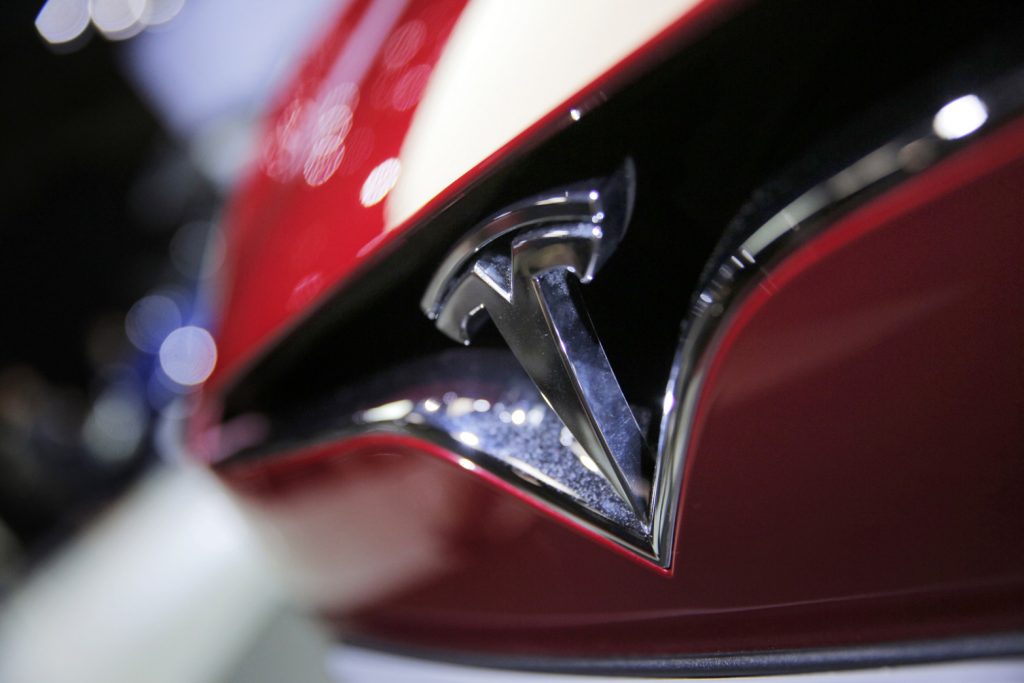BY NATHAN HALE

Law360 (October 30, 2018, 10:07 PM EDT) — Tesla was hit Tuesday with a personal injury and consumer protection lawsuit by a Florida man who allegedly suffered spinal and brain injuries when the autopilot feature in his Tesla Model S car apparently failed and crashed into a disabled car at high speed.
Plaintiff Shawn Hudson is seeking to hold the Palo Alto, California-based electric carmaker liable for the Oct. 12 crash, because it allegedly misleads drivers into believing they can rely upon the autopilot system, which it markets as allowing the vehicle to complete trips with minimal driver input, as a safe feature.
“Through a pervasive national marketing campaign and a purposefully manipulative sales pitch, Tesla has duped consumers, including Hudson, into believing that the autopilot system it offers with Tesla vehicles at additional cost can safely transport passengers at highway speeds with minimal input and oversight from those passengers,” the complaint says. “In reality, Tesla’s autopilot system does not and cannot function as Tesla claims and is dangerous to operate in motor vehicles that are intended to be driven on our nation’s highways.”
The complaint says the company claims the autopilot system is designed for use at highway speeds but does not reliably detect stationary objects, such as the disabled car in this crash, resulting in “an inordinately high risk of high-speed collisions, severe injury, and death both to Tesla’s passengers and to the driving public.”
The suit brings claims against Tesla for strict liability, negligence, breach of implied warranty, misrepresentation, misleading advertising and violation of Florida’s Deceptive and Unfair Trade Practices Act, plus a negligence claim against Miami resident Oscar Gonzalez-Bustamante for allegedly failing to perform his duty to remove his disabled car from the left travel lane before Hudson’s car slammed into it.
Tesla’s autopilot mode has drawn scrutiny following several previous crashes, including a deadly incident involving a 2017 Tesla Model X in March on a California highway and a fatal 2016 crash on Highway 27 outside Williston, Florida. Just last month, a woman sued the company in Utah state court after she rear-ended stopped traffic while operating a 2016 Model S in autopilot mode.
And in May, Tesla agreed to pay Model S and Model X drivers in California $5.4 million to settle claims that the company delayed safety features and an expensive upgrade to its autopilot system, and instead rolled out cars with defective traffic awareness features.
Hudson, who lives in Winter Park, Florida, near Orlando, said in his complaint that he was looking in 2017 for a car that could reduce some of the stress of his grueling commute to his job as the general manager of a car dealership in Fort Pierce, which is about a 125-mile, 2-hour drive each way.
He said he visited a Tesla dealership after seeing advertisements about the autopilot feature. The sales representative told him the feature made the car capable of essentially driving itself from one place to another and would be perfect for his commute, which involved driving mostly on Florida’s Turnpike.
The autopilot system worked as described during a test drive, but, still skeptical, Hudson asked and received a loaner vehicle to test the system more on his own.
Convinced after a weekend of trying it out, he paid $5,000 extra for the autopilot upgrade.
“Mr. Hudson bought this car for one reason — it could drive itself,” his attorney Mike Morgan of Morgan & Morgan PA said during a press conference Tuesday in Orlando to announce the lawsuit.
Over roughly a year of ownership prior to the crash, Hudson drove the Model S more than 98,000 miles, mostly commuting on Florida’s Turnpike. He said he frequently used the autopilot feature without incident, and his trust in the system grew.
But on Oct. 12, while driving at about 80 miles per hour in the left lane on the turnpike with the autopilot mode activated, his Model S plowed into Gonzalez-Bustamante’s disabled Ford Fiesta without stopping or slowing down. Hudson said Tuesday that he was relaxing and may have glanced at his phone shortly before the crash but had his hands on the wheel.
The front of Hudson’s car was completely destroyed, as a photo in the complaint shows. Hudson suffered severe permanent injuries, according to the complaint.
“If this had been something more substantial than a Ford Fiesta, he wouldn’t be here,” Morgan said of Hudson. “He got incredibly lucky to have sustained the injuries he did and to be sitting here today.”
Morgan said Tesla has at times described the autopilot system as driver assistance technology, suggesting a need for drivers to play a more active oversight role, but sells it to drivers as autonomous.
“They want the driver to take control at the last second after they have lulled him into this false sense of security that it’s driving itself. There’s no way for a driver to react that quickly,” Morgan said.
He accuses Tesla of treating drivers like Hudson and other motorists on the roads like guinea pigs, but said the company takes “zero responsibility” when accidents occur.
Hudson is seeking monetary damages for all of his injuries and damages, as well as attorney’s fees and costs. His complaint does not provide specifics on the medical expenses he has incurred or anticipates.
Tesla did not immediately respond to a request for comment Tuesday. Gonzalez-Bustamante could not immediately be reached for comment.
Hudson is represented by T. Michael Morgan, Steven E. Nauman and Branden Weber of Morgan & Morgan PA.
Counsel information for Tesla and Gonzalez-Bustamante was not immediately available.
The case is Hudson v. Tesla Inc. et al., case number 2018-CA-011812-O, in the Circuit Court for the Ninth Judicial Circuit of Florida.

